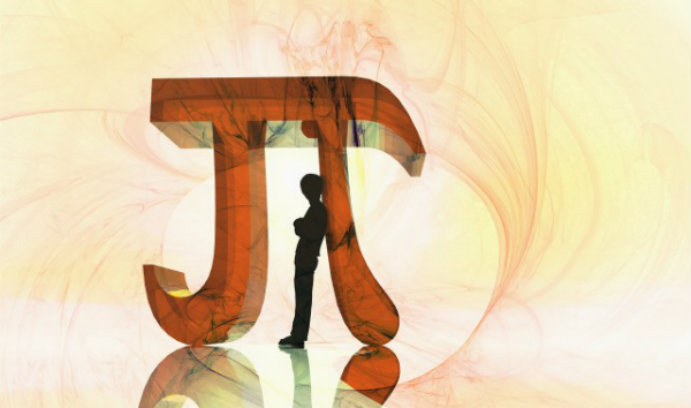Happy March 14! It’s Pi Day!

Photo by Corbis Images.
It is undoubtedly the world’s most popular irrational number, so much so that it gets its own day. March 14, for reasons obvious to some, is national Pi day, a time to reflect on the curious nature of this still-researched number, beloved by grade schoolers and mathematicians alike.
This year’s Pi Day is actually one in a hundred. On March 14, 2015 at exactly 9:26:53 a.m., the date and time will display the first 10 digits of pi: 3/14/15 9:26:53.
Even as children with no discernible mathematical skill, the circle, and its constant ratio between circumference and diameter, is easily recognizable, yet astoundingly complex. Harken back to your high school or college days and celebrate, with Lehigh mathematics professor Steven Weintraub, the number that can be simply put but also infinitely complex.
“The Greeks were the first to define pi as the constant ratio of the circumference of a circle to its diameter,” said Weintraub, who studies algebraic topology—a 20th century field of math that studies the qualitative aspects of higher-dimensional objects.
Even the Egyptians and the Babylonians knew about the existence of pi, also designated by the 16th letter of the Greek alphabet, π. Their understanding was more rudimentary, settling on a value slightly bigger than three.
“Around 200 B.C., Archimedes calculated it closely to what we today know as 3.14,” said Weintraub. Archimedes figured this out by creating a 96-sided polygon and measuring circles inscribed in and circumscribed around it." (According to Weintraub, Archimedes was no amateur…he anticipated calculus a full millennium before its discovery.)
“Nowadays,” said Weintraub, “we can easily compute pi to as many decimal places as we want—billions of places by now. Even in elementary calculus classes most students are quickly shown how to calculate pi to ten decimal places.”
Pi, as most know, is an irrational number—there is no way to represent it as an integer (Sorry, 22/7 is not exactly pi) and it never terminates or repeats a decimal. It’s also a transcendental number, meaning it’s not the root of any non-zero polynomial. With all this complexity, why all the attention?
“Why are people drawn to pi? Because it’s there,” said Weintraub. “If I climbed mountains I would climb Mount Everest. If you are a mathematician you can’t help but come across it.
“Pi occurs throughout mathematics,” said Weintraub. “Even in areas of mathematics that have nothing to do with circles.” Weintraub cites the Basel Problem, proven by Leonhard Euler, who shot to fame at a young age by determining that the sum of all reciprocal perfect squares (1/1 + 1/4 + 1/9 + 1/16 + 1/25 and so on) was equal to, in fact, pi squared over 6.
“The fact that we have this unity in mathematics, where the same things occur in different places, is one of the glories of mathematics,” said Weintraub. “Mathematics, I think, is a beautiful art which has a great aesthetic value for all of us.”
Because π defines a circle, it is found in many branches of mathematics including trigonometry and geometry, cosmology, number theory, statistics, fractals, thermodynamics, mechanics and electromagnetism.
Today, we often hear about pi in the news as people attempt to set records for memorizing digits. The Guinness World Record is currently 67,890 digits by Lu Chao of China. Or, from time to time, a new supercomputer, intent on proving its processing power, will calculate pi to billions of places.
There are still many things we don’t know about Pi. The question for some is, do we need to know more? “For calculating purposes, knowing pi to more than 40 or 100 digits is more than any physical application would ever need,” said Weintraub. “But we don’t do mathematics just for physical applications. We do it, as the mathematician Carl Jacobi said, for ‘the honor of the human spirit.’”
Is there something cosmic in a number so simple to grasp yet simultaneously so difficult to fully understand?
Mathematicians, says Weintraub, study things because they are beautiful and there are always more questions to answer. “That entrances mathematicians. When something is beautiful and interesting, that, in and of itself, is reason to study it. While every mathematician would bet their house that the proportion of digits in pi, the zeros, ones, twos, up to nine, would occur randomly one tenth of the time, we don’t do things in mathematics by majority rule, or even by unanimous vote. We do it by proof. And no one knows how to prove this. That’s exciting.”
How does a revered mathematician suggest you celebrate pi day? “With a delicious piece of blueberry pie,” he said. You’ll have to find that on your own.
Posted on:

